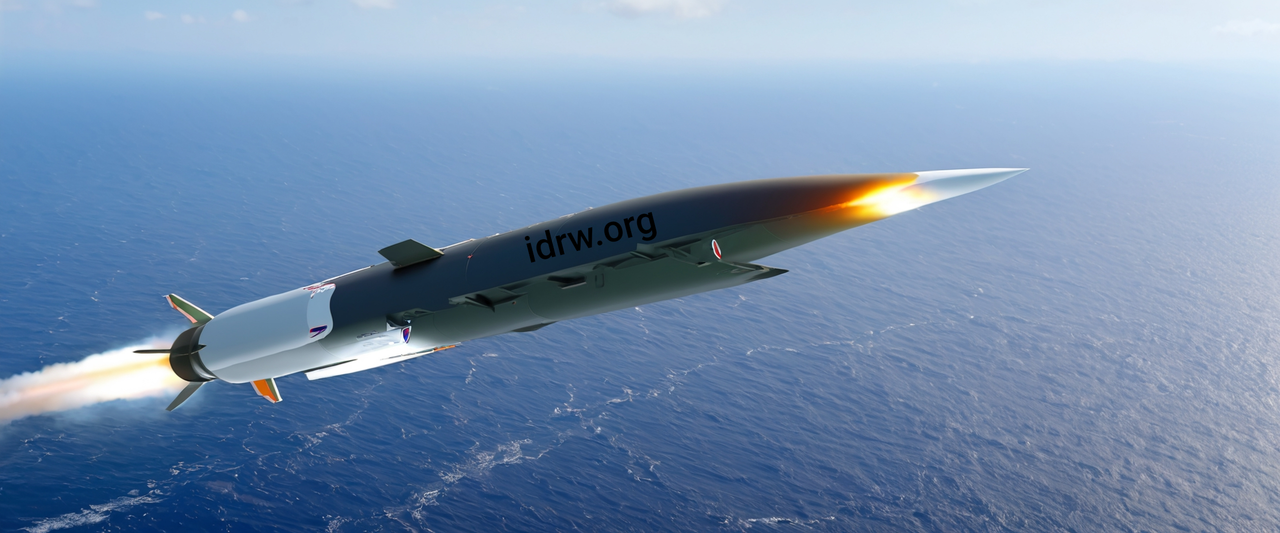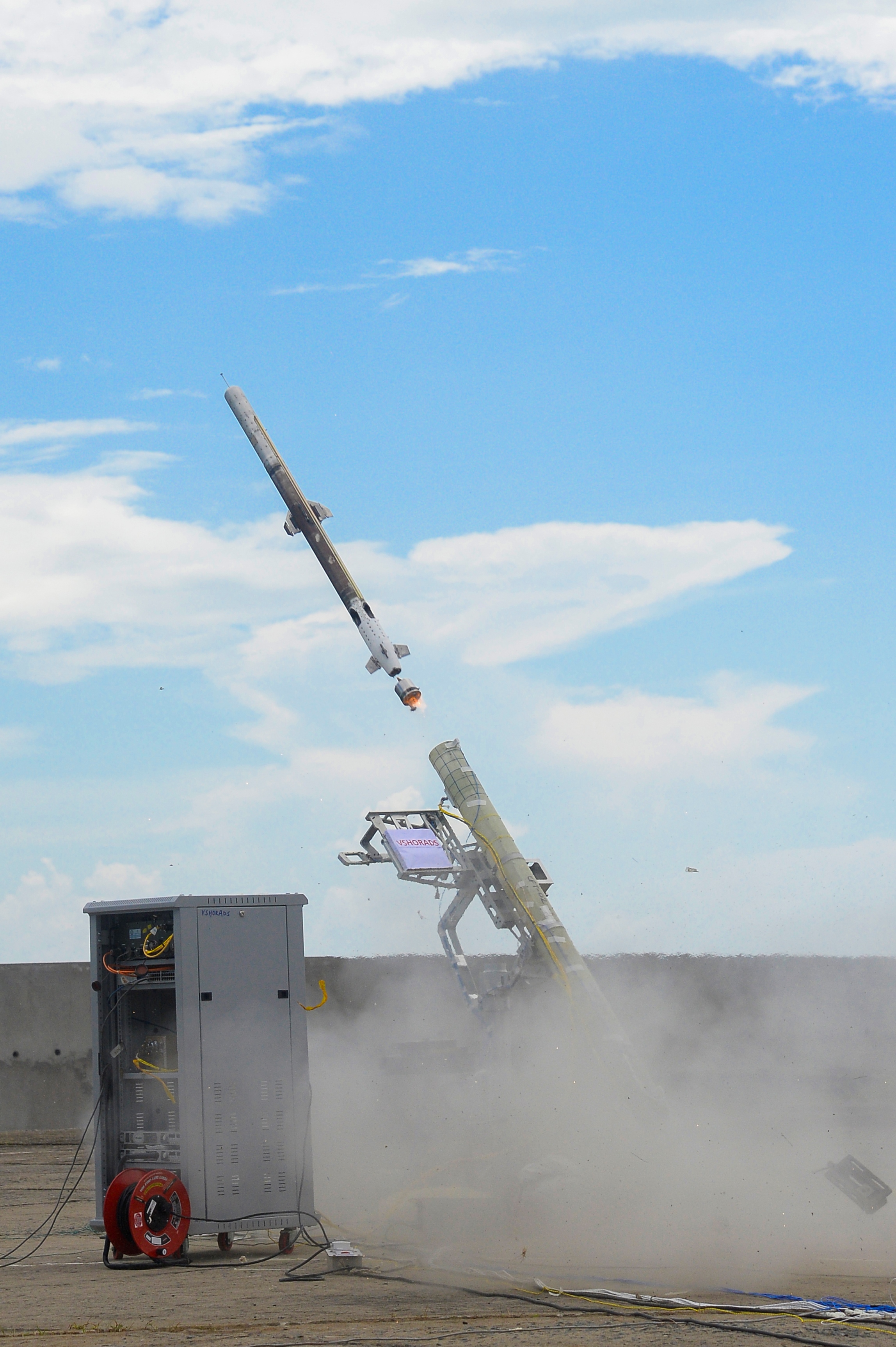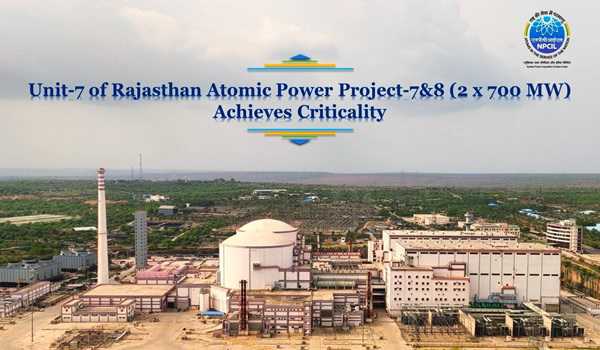SOURCE: IDRW.ORG TEAM

The Defence Research and Development Organisation (DRDO) is taking a significant step forward in its hypersonic missile program with the initiation of Project Vishnu. This ambitious project aims to develop a next-generation hypersonic cruise missile, marking a major leap in India’s defense capabilities.
Project Vishnu builds upon the successful trials of the Hypersonic Technology Demonstrator Vehicle (HSTDV). The HSTDV, powered by a scramjet engine, served as a crucial test platform for validating hypersonic technologies. Now, under Project Vishnu, DRDO will be focusing on the research and development of a more advanced fuel tank specifically designed for hypersonic cruise missiles.
Continue readingSOURCE: IDRW.ORG

A significant breakthrough in defense technology has been achieved by Coimbatore-based Ignetta Holographic Private Limited. The company has become the first in India to manufacture holographic weapon sight systems, providing our soldiers with a crucial tool for pinpoint accuracy and operational success.
The holographic sight, developed by Ignetta Holographic, is compatible with various rifle models, including SIG Sauer and AK-47. This versatile design ensures its applicability across different weapon platforms, enhancing the effectiveness of our armed forces.
Continue readingSOURCE: AFI

As the nature of warfare evolves, so do the demands placed on weapon stockpiles and the ability of nations to replenish them. Modern battlefields are witnessing longer, more protracted conflicts, which can strain military resources. For India, a nation that faces the potential challenge of two-front conflicts with adversaries like China and Pakistan, ensuring a steady and agile supply chain for weapons and critical components is crucial. In this context, 3D printing, or Additive Manufacturing (AM), has emerged as a promising solution to help Indian forces address potential gaps in their military supply chains.
Additive manufacturing, commonly known as 3D printing, is revolutionizing production in defense and aerospace industries worldwide. It involves creating objects layer by layer from digital 3D models, effectively building the part and material simultaneously. This technology offers a significant advantage over traditional manufacturing methods, where materials are often cut away or assembled from multiple components. The benefits of additive manufacturing in defense are multifold:
Continue readingSOURCE: AFI

According to a report published by The Hindu, India declined a request from Israel last year for the supply of Indian-made artillery shells, specifically 155mm and 105mm, which were sought at the onset of Israel’s operations along its border with the Gaza Strip and southern regions. Despite growing defense ties between the two nations and the robust partnership between Israeli arms companies and their Indian counterparts, New Delhi took a cautious stance and opted not to fulfill the request for these critical munitions.
In the early phases of its military operations along the Gaza Strip, Israel turned to India for artillery shells, likely driven by the rapid depletion of its ammunition reserves. Artillery shells, especially 155mm and 105mm, are essential in land-based military engagements, providing both offensive and defensive firepower. Israel, which has been involved in periodic skirmishes with Hamas and other militant groups in Gaza, needed to replenish its stockpiles quickly. However, India, which has significantly increased its indigenous defense production capabilities, declined the request, citing concerns over the ongoing conflict.
Continue readingSOURCE: AFI

Vikram Rai, CEO of GE Aerospace (South Asia), recently outlined the company’s ambitious plans for India, signaling its growing commitment to the country. In a conversation with Indian media, Rai revealed that GE Aerospace has increased its exports from India “20 times” between 2018 and 2022, a significant leap demonstrating the country’s rising importance as a key player in the global aerospace supply chain.
GE Aerospace’s expansion in India is reflected in its robust presence in the country’s aviation sector. The company currently has over 1,300 engines operational in India, powering aircraft such as Boeing 787 Dreamliners, Boeing 777s, and Airbus A320neo family planes for major airlines like Air India, IndiGo, and Vistara. In addition to this existing fleet, GE Aerospace, along with its joint venture CFM International (a partnership with French aerospace giant Safran), has 2,000 more engines on order to be delivered over the next eight to nine years. This translates to a pace of roughly one aircraft equipped with GE Aerospace engines being delivered every week, highlighting the scale of the company’s operations in India.
Continue readingSOURCE: AFI

The Indian Navy is set to bolster its maritime strength with the induction of seven new warships and one submarine over the next four months, according to defense sources who spoke to Sputnik India. This significant boost to naval capabilities aligns with India’s ongoing efforts to modernize its fleet, enhance operational readiness, and protect its extensive maritime interests.
While one of the vessels is being built in Russia, the majority of these platforms are being constructed domestically in Indian shipyards, underscoring the country’s increasing focus on indigenous defense production.
Continue readingSOURCE: AFI

A significant milestone in Indian naval history was reached as the indigenous aircraft carrier, INS Vikrant, was officially inducted into the Western Fleet. This marks the beginning of its operational deployment, reinforcing India’s maritime capabilities.
INS Vikrant, commissioned into the navy in September 2022, will be stationed at INS Kadamba, a strategic naval base located near Karwar in Karnataka. The Western Naval Command announced the induction, emphasizing the significant boost it provides to the navy’s maritime power and reach.
Continue readingSOURCE: UNI

In a significant milestone, the third indigenous Pressurised Heavy Water Reactor (PHEW)–Unit 7 of the 2×700 MW Rajasthan Atomic Power Project (RAPP-7and 8) at Rawtbhata in Rajasthan, attained criticality, marking the commencement of controlled fission chain reaction and it would be connected to the grid after conducting various tests. The Unit-7 attained criticality at 2242 hrs on Thursday night, the Nuclear Power Corporation of India Limited (NPCIL) said in a statement on Friday evening.
The milestone was attained after getting clearance for the First Approach to Criticality from the Atomic Energy Regulatory Board (AERB). RAPP-7 is the third in the series of 6 indigenous PWHR of 700 MW each, being set up in the country. The successful achievement of criticality of RAPP-7 , after the smooth operation of the first two 700 MW PHWRs–KAPS 3 AND 4 (2X700 mw) at Kakrapar in Gujarat, demonstrates the maturity achieved by NPCIL in the design, construction and operation of the indigenous PHWRs.
Continue readingSOURCE: ANI
)
Troops of Indian and US Armies carried out multiple drills during the ongoing ‘Exercise Yudh Abhyas’ in Mahajan firing ranges in Rajasthan, with the aim to strengthen interoperability and foster greater synergy between the two forces.
The soldiers participated in the validation phase of Exercise Yudh Abhyas in Rajasthan. The drills included a display of targeting small drones by trained birds, firing of howitzers, heavy machine guns, and mortars, and showcasing of their armoured vehicles.
Continue readingSOURCE: PTI
)
Union Home Minister Amit Shah on Saturday said there is peace along the borders in Jammu and Kashmir as Pakistan fears Prime Minister Narendra Modi and would dare to open fire.
Shah was addressing an election rally in this border area in the Union territory’s Poonch district in support of BJP candidate Murtaza Khan. He lauded the BJP-led Centre for wiping out terrorism by replacing guns and stones in the hands of youngsters with laptops and said his government would not allow guns to resonate in the hills of Jammu region.
Continue readingSOURCE: PIB
6NRX.jpg)
The Defence Institute of Physiology and Allied Sciences (DIPAS), a leading laboratory under the Defence Research and Development Organisation (DRDO) handed over critical high-altitude sustenance technologies to the Power Grid Corporation of India Ltd (PGCIL) during an orientation workshop on September 21, 2024, at PGCIL’s regional headquarters in Jammu. This workshop was organised to prepare employees for high-altitude operations as part of the 5000 MW Pang-Kaithal High Voltage Direct Current (HVDC) Project in Ladakh.
The Pang-Kaithal HVDC Project, located at an altitude of 15,760 feet, is a significant step towards energy security in the region of Ladakh and the wider integration of solar power into India’s national grid. The technologies transferred by DIPAS will support PGCIL in the high-altitude sustenance of its workforce during the project.
Continue readingSOURCE: PIB
FF2S.jpg)
The Government has appointed Air Marshal Amar Preet Singh, PVSM, AVSM, presently serving as Vice Chief of the Air Staff, as the next Chief of the Air Staff, in the rank of Air Chief Marshal, with effect from the afternoon of September 30, 2024. The present Chief of the Air Staff Air Chief Marshal Vivek Ram Chaudhari, PVSM, AVSM, VM, ADC demits office on September 30, 2024.
Born on October 27, 1964, Air Marshal Amar Preet Singh was commissioned into the fighter pilot stream of the Indian Air Force in December 1984. During his long and distinguished service spanning nearly 40 years, he has served in a variety of Command, Staff, Instructional and Foreign appointments.
Continue readingSOURCE: ANI

Emphasising the ardent need for reforms in the UN Security Council, India’s permanent representative to the United Nations, Ambassador Parvathaneni Harish, said that India is an essential country in the international system and has a legitimate right to a seat in the permanent category in the UNSC.
He underscored that a reformed Security Council needs expansion, adding that it is exactly what India, along with other countries, seeks at the moment. While speaking to ANI in an exclusive interview in New York, the Ambassador said, “The pact’s proposal is very clear, all countries agree that a reformed Security Council needs expansion in both permanent and non-permanent categories. India, along with other countries, seek urgent, time-bound, and text-based negotiations so that such expansion in both permanent and non-permanent categories can happen.”
Continue readingSOURCE: ANI

Prime Minister Narendra Modi will arrive in the US Saturday for a three day visit that includes the Quad summit a bilateral meeting with President Joe Biden, an address to the Indian diaspora at the Nassau stadium and an address to the Summit of the Future. At the Quad, China is expected to be a key focus of discussion. US National Security Council (NSC) Coordinator for Strategic Communications John Kirby on September 19 had said that China will certainly be “high on the agenda” at the Summit. Indian origin Congressman Shri Thanedar says India and US need to work together to counter China.
“China is becoming very aggressive and India and the US need to form a very strong bond, whether it is in technology, defence, science, commerce. We need to have strong ties with India. India and US need to work together because China is becoming aggressive and the only way for us to slow down China is to have a strong India-US relationship.
Continue readingSOURCE: ANI

Prime Minister Narendra Modi who commenced his three-day visit to the US on Saturday said he will take part in various programs and will have a bilateral meeting with President Joe Biden.
Highlighting his schedule, PM Modi informed that he will also attend the Summit of the Future, an event hosted by the United Nations General Assembly and will address a community program in New York.
Continue reading